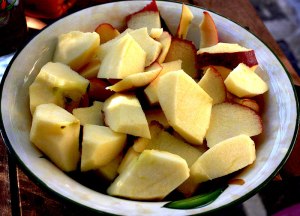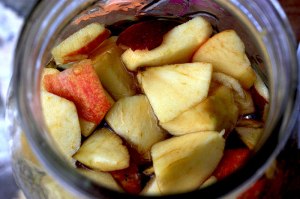The extract below is copied from http://www.ketogenic-diet-resource.com/low-carb-food-list.html.
You can use this information courtesy to this lovely lady who maintain the site.
Thank you, Ellen!
Here’s a low carb food list and the buying techniques I use which will help you buy ketogenic foods that are clean, whole and offer the best nutrition.
Fats and Oils:
Since the majority of calories on a ketogenic diet will come from dietary fats, choices should be made with digestive tolerance in mind. Most people cannot tolerate eating a large amount of vegetable oil, mayonnaise or even olive oil over time. And this is a good thing, since vegetable oils are high in polyunsaturated Omega-6 fatty acids.
The Omega-6 fatty acids (found in nut oils, margarines, soybean oil, sunflower oil, safflower oil, corn oil, and canola oil) should be limited due to the inflammatory effect they trigger within the body. Most nuts (with the exceptions of macadamias and walnuts) are high in Omega 6 fatty acids as well, so go easy on them). Your intake of polyunsaturated fats should be balanced between Omega 6 and Omega 3 types. Eating wild salmon, tuna and shellfish will provide balancing Omega 3 fatty acids and are important part of a low carb food list. If you don’t like seafood, then consider taking small amounts of a fish or krill oil supplement.
Saturated and monounsaturated fats such as butter, macadamia nuts, coconut oil, avocado and egg yolks are tolerated more easily by most people, and since they are chemically stable, they are less inflammatory. Fats and oils can be combined in sauces, dressings, and other additions to basic meals. Over time, it will become a habit to add a source of fat to each meal.
Avoid hydrogenated fats such as margarine to minimize trans fats intake. If you use vegetable oils (olive, canola, sunflower, safflower, soybean, flaxseed and sesame oils) choose “cold pressed.” Keep cold pressed oils like almond and flaxseed refrigerated to avoid rancidity. Avoid heating vegetable oils. Use clean non-hydrogenated lard, beef tallow, coconut oil, ghee and olive oil for frying, since they have high smoke points.
- Avocado (very high in fat, so I’m including it here)
- Avocado oil
- Almond oil
- Beef tallow, preferably from grass fed cattle
- Butter: try to find organic sources
- Organic Chicken fat
- Ghee
- Lard (make sure it is NOT hydrogenated)
- Macadamia Nuts
- Macadamia oil
- Mayonnaise (most have carbs, so count them. Duke’s brand is sugar free.)
- Olives
- Olive oil, organic
- Organic coconut oil, coconut butter and coconut cream concentrate
- Organic Red Palm oil
- Peanut Butter: make sure to use unsweetened products, and limit due to Omega 6 content.
- Seed and most nut oils: Sesame oil, Flaxseed oil, etc. These are higher in inflammatory Omega 6 fats, so limit amounts, and don’t heat them.
- 85-90% dark chocolate can be used in small amounts.
Sources of Protein
Fattier cuts of meat are better because they contain less protein and well, more fat. Choose organic or grass fed animal foods and organic eggs if possible to minimize bacteria, antibiotic and steroid hormone intake. Websites such as www.eatwild.com or www.localharvest.org can point you to local sources of clean, grass fed meats and poultry. These clean proteins are the best choices for a low carb food list.
- Fish or seafood of any kind, preferably wild caught: anchovies, calamari, catfish, cod, flounder, halibut, herring, mackerel, mahi-mahi, salmon, sardines, scrod, sole, snapper, trout, and tuna. Canned tuna and salmon are acceptable but check the labels for added sugars or fillers. (Exception: Avoid breaded and fried seafood.)
- Shellfish: clams, crab, lobster, scallops, shrimp, squid, mussels, and oysters. (Exception: imitation crab meat. It contains sugar, gluten and other additives.)
- Whole eggs: These can be prepared in various ways: deviled, fried, hard-boiled, omelets, poached, scrambled, and soft-boiled.
- Meat: beef, lamb, veal, goat and wild game. Grass fed meat is preferred, as it has a better fatty acid profile.
- Pork: pork loin, Boston butt, pork chops, ham. Look out for added sugar in hams.
- Poultry: chicken, turkey, quail, Cornish hen, duck, goose, pheasant. Free range is better if it’s available.
- Bacon and sausage: check labels and avoid those cured with sugar or which contain fillers such as soy or wheat. Specialty health food stores carry most brands of sugar-free bacon.
- Peanut butter and soy products such as tempeh, tofu and edamame are good sources of protein, but they are higher in carbohydrate, so track them carefully.
- Whey protein powders, plus rice, pea, hemp or other vegetable protein powders.
Fresh Vegetables
Most non-starchy vegetables are low in carbs. Choose organic vegetables or grow your own to avoid pesticide residues. Avoid the starchy vegetables such as corn, peas, potatoes, sweet potatoes, and most winter squash as they are much higher in carbs. Limit sweeter vegetables such as tomatoes, carrots, peppers, and summer squashes.
- Alfalfa Sprouts
- Any leafy green vegetable
- Asparagus
- Bamboo Shoots
- Bean Sprouts
- Beet Greens
- Bok Choy
- Broccoli
- Brussels Sprouts
- Cabbage
- Cauliflower
- Celery
- Celery Root
- Chard
- Chives
- Collard Greens
- Cucumbers
- Dandelion Greens
- Dill Pickles
- Garlic
- Kale
- Leeks
- Lettuces and salad greens (Arugula, Bok Choy, Boston lettuce, Chicory, Endive, Escarole, Fennel, Mache, Radicchio, Romaine, Sorrel.)
- Mushrooms
- Olives
- Onions (limited amounts, as they are higher in sugar)
- Radishes
- Sauerkraut
- Scallions
- Shallots
- Snow Peas
- Spinach
- Swiss Chard
- Turnips
- Water Chestnuts
Dairy Products
Raw milk products are preferable; choose organic if raw products are not available.
- Heavy whipping cream
- Full fat sour cream (check labels for additives and fillers. Look for brands such as Daisy which are pure cream with no added milk; carbs and protein will be low.)
- Full fat cottage cheese
- All hard and soft cheeses: (count each 1 ounce portion as 1 carb generally)
- Cream cheese (count each 1 ounce portion as 1 carb generally)
- Unsweetened whole milk yogurt (limit amounts as it is a little higher in carb) (Fage full fat Greek yogurt is divine)
- Mascarpone cheese
Nuts and Seeds
Nuts and seeds are best soaked and roasted to remove anti-nutrients. Avoid peanuts as they are actually legumes.
- Nuts: macadamias, pecans, almonds and walnuts are the lowest in net carbs and can be eaten in small amounts. Cashews, pistachios and chestnuts are higher in carb, so track carefully to avoid going over carb limits. Nuts are also higher in Omega 6 fats, which are inflammatory so don’t rely on nuts as your main protein source.
- Nut flours, such as almond flour. I include this because a low carb food list shouldn’t completely exclude baking. Almond flour is a great flour substitute. See my recipe page for ideas on how to use it with the foods on this low carb food list.
Beverages
- Clear broth or bouillon
- Decaf coffee
- Decaf Tea (unsweetened)
- Herbal tea (unsweetened)
- Water
- Flavored seltzer water (unsweetened)
- Lemon and lime juice in small amounts.
Sweeteners
Avoiding sweetened foods in general will help “reset” the taste buds. However, if there is a desire for something sweet, these are the recommended choices for sweeteners. Note that the powdered forms of most artificial sweeteners usually have maltodextrin, dextrose or some other sugar added, so liquid products are preferred.
- Stevia, liquid preferred as the powdered usually has maltodextrin in it.
- Erythritol
- Xylitol (keep any food with this sweetener in it away from dogs)
- Splenda*, liquid preferred as the powdered usually has maltodextrin in it.
- Lo Han Guo
- Monk Fruit
- Inulin and Chicory Root (Just Like Sugar brand)
*Some readers have objected to my recommending Splenda. If you have concerns about this, please note that I have done research in the medical literature and I have looked at the studies which have been offered on sucralose (Splenda).
I have yet to find a gold standard, clinically controlled human study which shows conclusively that sucralose causes human health issues. I don’t like to propagate misinformation so I wait until there are definitive studies of negative effects before I condemn a product. In my opinion, eating sugar, honey and other nutritive sweeteners has negative blood sugar effects which far surpass those which might be associated with using a small amount of Splenda, or any other non-nutritive sweetener.
Having said that, I will also say that I offer information on this low carb food list about Splenda, just as I do on the other sugar substitutes, because everyone is different. Some people are not bothered by Splenda, while others are. It’s the same for sugar alcohols and other sweeteners such as inulin and chicory root. I try to offer both pros and cons for each sweetener, with the idea that readers will use the product that suits them best. See this page on my website for more information.
Spices
Spices do have carbs, so be sure to count them if they are added to meals made using this low carb food list. Commercial spice mixes like steak seasoning usually have added sugar. Sea salt is preferred over commercial salt, which is usually cut with some form of powdered dextrose.
- Basil, Black pepper, Cayenne pepper, Chili pepper, dried, Cilantro/Coriander seeds, Cinnamon, ground, Cloves, Cumin seeds, Dill, Ginger, Mustard seeds, Oregano, Parsley, Peppermint, Rosemary, Sage, Thyme, and Turmeric.
Filed under: Reiki and chakras | Tagged: food, ketogenic, low carb, low carb diet, low carbs foods | Leave a comment »



 You can use any apple parts; apple pieces, seeds and cores, peels, everything. Just put them in a bowl and let them sit for one day to start browning.
You can use any apple parts; apple pieces, seeds and cores, peels, everything. Just put them in a bowl and let them sit for one day to start browning.
